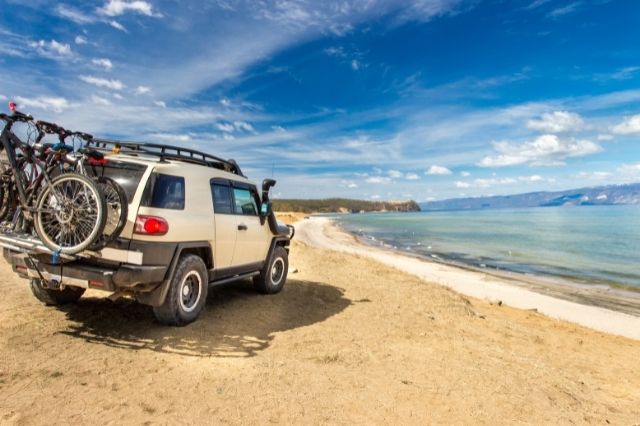Off-road enthusiasts in the western United States have access to challenging trails and gorgeous scenery. Some of these trails, whether in deserts or along coastlines, will have you and your Jeep traversing not soil but sand. In both its beach and desert forms, it can call for a new set of skills when driving—you’ll have to change the way you accelerate, brake, and handle the wheel to get over this terrain. Some of the dangers of off-roading in sand may deter you from hitting these trails altogether, but with the right precautions, you can go beyond the roads less traveled.
Getting Trapped by Wet Sand
Quicksand likely captured your imagination as a child—the idea of this patch of sludge sucking unfortunate people into a bottomless pit is certainly intriguing, albeit quite morbid. All wet sand isn’t necessarily quicksand, but it can prove quite hazardous to off-roaders. Once your tires start to sink into well-soaked sand, it’ll be hard to get them back out.
Dry Sand: Just as Dangerous
Dry sand can be treacherous for your vehicle as well. Tight turns in dry sand can be extremely dangerous. Because the sand doesn’t give your tires adequate traction, it’s easy to roll over while attempting a turn. If you hit the dunes and don’t have a hard surface underneath, drive in straight lines as much as possible to avoid disaster. Save the twists and turns for more solid ground.
Damage to the Vehicle
As rugged as a Jeep is, accumulated salt, sand, and other minerals can damage sensitive areas of the vehicle, particularly the undercarriage. Their abrasive qualities can harm the structural integrity of the Jeep’s components, and sprays of salty seawater can lead to corrosion of steel parts. If you off-road in sand, make sure to wash your Jeep thoroughly after your adventure is over.
Start and Finish Slow
Whether it’s wet or dry, one of the biggest dangers of off-roading in sand comes from rapid acceleration and deceleration on an ever-shifting surface. Hard braking leaves mounds of sand in your wake, making it difficult for other off-roaders who may follow you—not to mention running the risk of getting stuck yourself. Flooring the gas on sand won’t help you go from 0 to 60. In fact, it may keep you right where you are. One of the best tips to take is to accelerate and brake gradually.



